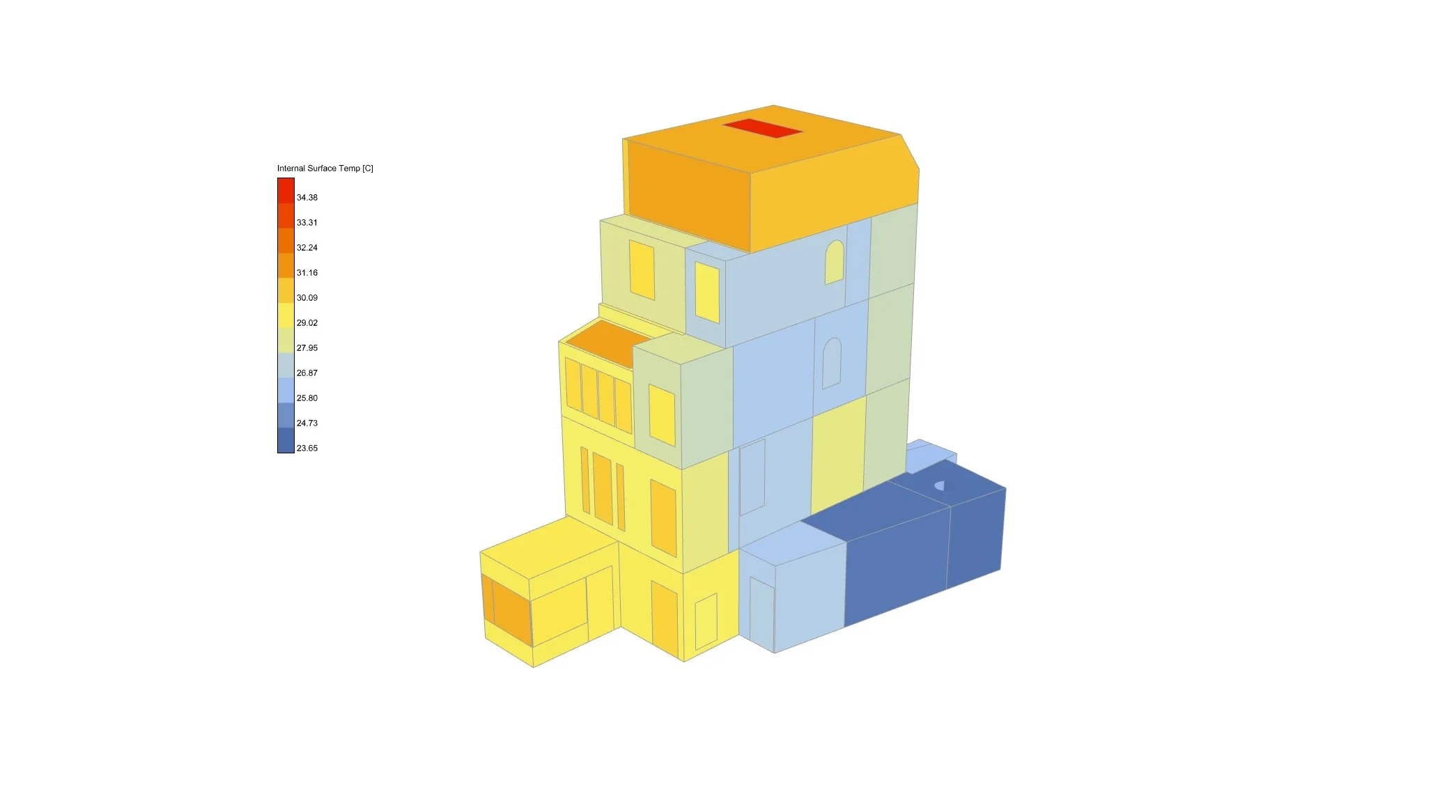OVERHEATING IN BUILDINGS
Complying Part O and TM59
In this blog post, we'll delve into the essentials of Building Regulations Part O and CIBSE TM59 Overheating Assessments, highlighting their importance, advantages, and implications within the context of UK building regulations.
As global temperatures rise and urban areas experience higher ambient temperatures, the risk of residential overheating becomes more pronounced. Part O and TM59 Overheating Assessments, with their detailed and anticipatory approach, play a crucial role in preparing buildings for these challenges. The updated building regulations including Part O came into effect in June 2022, and require new residential developments to meet certain criteria regarding overheating.
By integrating these methodologies into the building design process, developers can future-proof properties against the anticipated increase in summer temperatures, ensuring sustainable, comfortable, and compliant residential environments.
Part O and TM59 are essential tools in the architectural and building compliance landscape of the UK, addressing both current and future climatic challenges to ensure that new homes remain cool, comfortable, and energy-efficient. For further insights and professional guidance, engaging with a sustainability consultant to discuss the specific needs of your project is highly recommended.
“Part O is very valuable. It means that we can make more informed decisions about how we design homes and buildings and to address design issues that can affect overheating risks right now, which will become more pronounced with climate change” Mark Sidall
What is the Approved Document O and and how does it function within the UK building regulations?
CIBSE TM59 is a dynamic thermal modelling method designed to predict and mitigate the risk of overheating in residential buildings, particularly new homes and major renovations. This method relies on the principles of thermal comfort, which amongst other factors, analyses the relationship between external and internal temperature.
Dwellings in London looking to install AC must submit CIBSE’s TM59 thermal assessment to obtain the relevant permit.
This methodology has two compliance criteria:
Habitable spaces such as Kitchens, Living Rooms and bedrooms must not exceed the maximum acceptable temperature for more than 3% of occupied hours.
Bedrooms’ internal temperature between 22:00 and 7:00 must not exceed 26°C for more than 32 hours throughout the year.
In addition to the previous criteria, corridors are also assessed for overheating risk.
THE SIMPLIFIED APPROACH
It’s quicker and more straightforward calculation that can be solved with any spreadsheet software. This method evaluates solar gains and natural ventilation potential based on window dimensions and orientations, and their respective free areas.
Prior to implementing this method, it is necessary to assess the development's risk level, classifying it as either high or moderate. High-risk zones encompass specific areas such as central London and central Manchester. Locations across the rest of England that do not fall under high-risk criteria are classified as moderate-risk.
THE DYNAMIC THERMAL SIMULATION METHOD
The Dynamic Thermal Simulation methodology is largely based on CIBSE TM59 with some subtle differences that can have a large impact. E.g. CIBSE TM59 allows the use of blinds as an overheating mitigations strategy, Document O does not.
What is CIBSE TM59 and how does it differ from Part O?
CIBSE TM59 is a dynamic thermal modelling method designed to predict and mitigate the risk of overheating in residential buildings, particularly new homes and major renovations. This method relies on the principles of thermal comfort, which amongst other factors, analyses the relationship between external and internal temperature.
Dwellings in London looking to install AC must submit CIBSE’s TM59 thermal assessment to obtain the relevant permit.
This methodology has two compliance criteria:
Habitable spaces such as Kitchens, Living Rooms and bedrooms must not exceed the maximum acceptable temperature for more than 3% of occupied hours.
Bedrooms’ internal temperature between 22:00 and 7:00 must not exceed 26°C for more than 32 hours throughout the year.
In addition to the previous criteria, corridors are also assessed for overheating risk,




